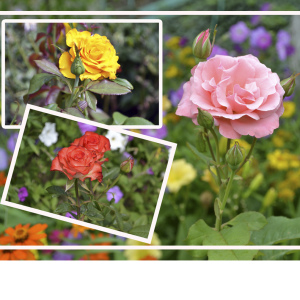Animation pictures may not only decorate the page or post, but also to carry useful information. This kind of picture is faster attract attention, and also provide more productive user interaction with the interface. How to create animated images using Photoshop resources - read in this article.
Algorithm for creating gif animation in Photoshop
GIF animation or sample animation is a sequential change of image you specified. Running the PhotoShop graphic editor, download the series prepared in advance pictures. It is they who will form your animation.
- Go to the "File" tab and among the points of the fallen list, select the scripts ("scripts").
- Next, refer to the download options option to the stack ("Load Files Into Stack").

- The choice of the necessary pictures for creating an animation occurs through the "Overview" key. T. K. You need to download a series of images, clamp the SHIFT key and select the necessary files. Click "OK". As a result, all images are loaded into one file that combines several layers. Layers located in the right half of the work field and will be your gif-picture frames.

- The next step is to go to the time scale. Working with the English-language version of the editor, the user needs to go to the Window tab (window), and then select the item "Timeline" - the time scale itself.

- In the central part of the panel that appears at the bottom of the PhotoShop window, by pressing the arrow, select the option to create an animation frame - "Create Frame Animation". Perform this command by clicking on this central key.

- Next, you start turning the layers loaded at the initial stage in the animation frames. To do this, click on the time scale menu button (it is located in the upper right corner of the central time scale block) and select the framework of the framework from the layers - "make frames from layers". If you want to see the change of frames in the reverse order, choose the option "Reverse Frames".

- The result of your work can be seen by pressing the space key or the play button on the time scale.
- The final step of creating a GIF-animation is a loop, i.e., a continuous replay of frames by one cycle. To do this, in the left lower part of the time scale panel, click on a small elder and choose the option of constant shift frames - "Forever". The change speed of the pictures is installed for each frame by clicking the arrow below it - select the appropriate value or install your own option.

To save the resulting animation, go back to the "File" section.
- Choose a save point for Web ("Save for Web"). This string can be made separately, and may be "hidden" in export ("Export").

- Fill in the following fields:
- Dialing field ("Preset") - GIF 128 DITHERED.
- In colors column ("Colors") - 266.
- In the repeat parameter field ("LOOPING OPTIONS"), choose the option of constant shift ("Forever").
- If necessary, adjust the sizes of the file (in the lower left corner of "Image Size").
- By clicking the "Save" key, save the file and specify its storage location.

Algorithm for creating animation in Photoshop from video
The first stage involves converting video frames into separate layers to create sample animation.
- Run the Photoshop editor and go to the "File" section.
- Download video fragments into layers - Going to the importing item ("Import"), select the "Video Frame to Layers" string.
- Next, selecting a video file, click the "Open" key.
- To complete the conversion of video fragments into a multi-layer file, click "OK".
Further actions repeat the algorithm to create antimitations from a series of pictures (described above).
Using the algorithm for creating sample animation, you can work not only with the already ready-made images or plots of video, but also with self-created sets of pictures. Armed with a pencil ("pencil tool"), for example, you can create a series of pixel-art pictures, which are then combined into an animated plot.






























